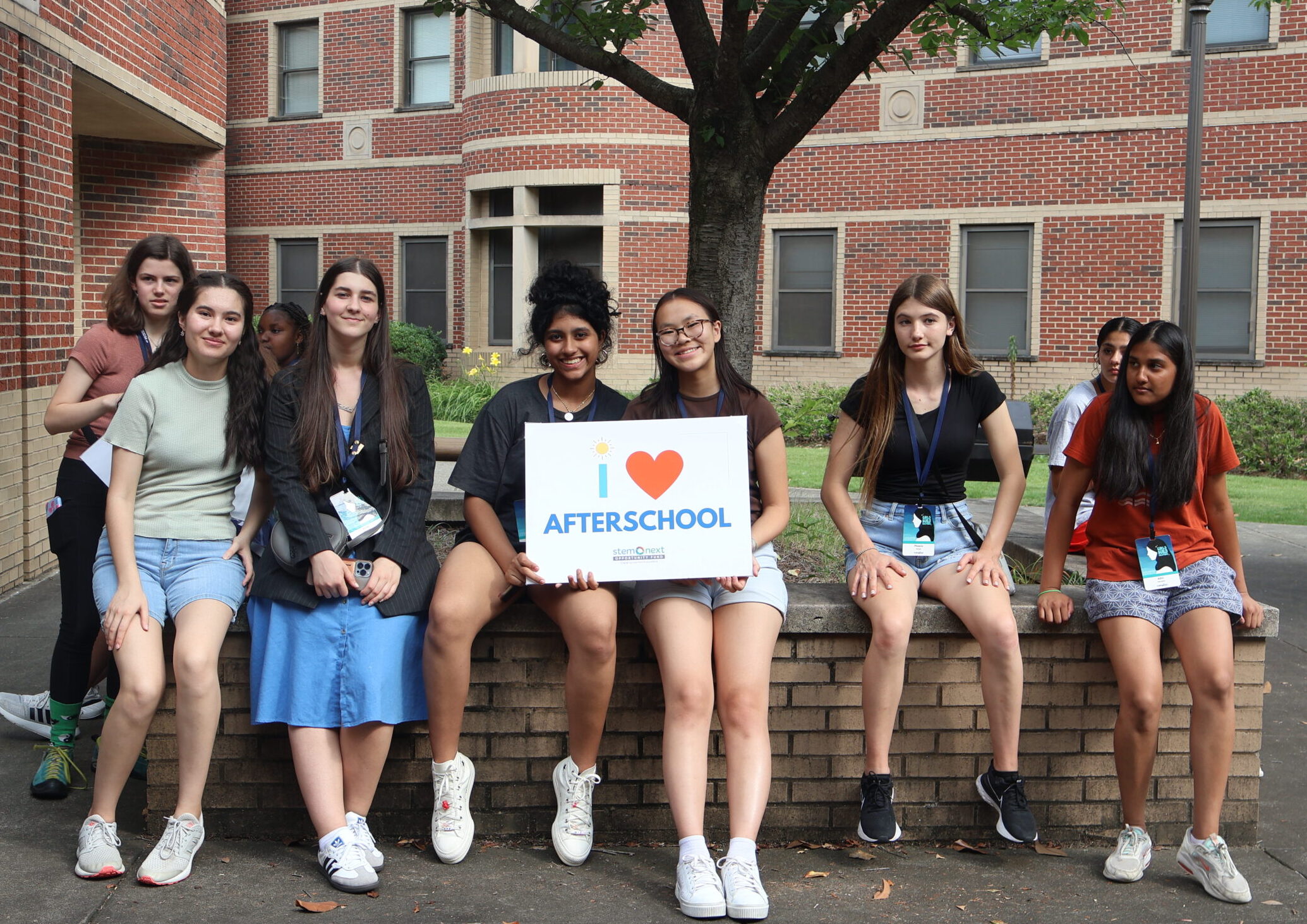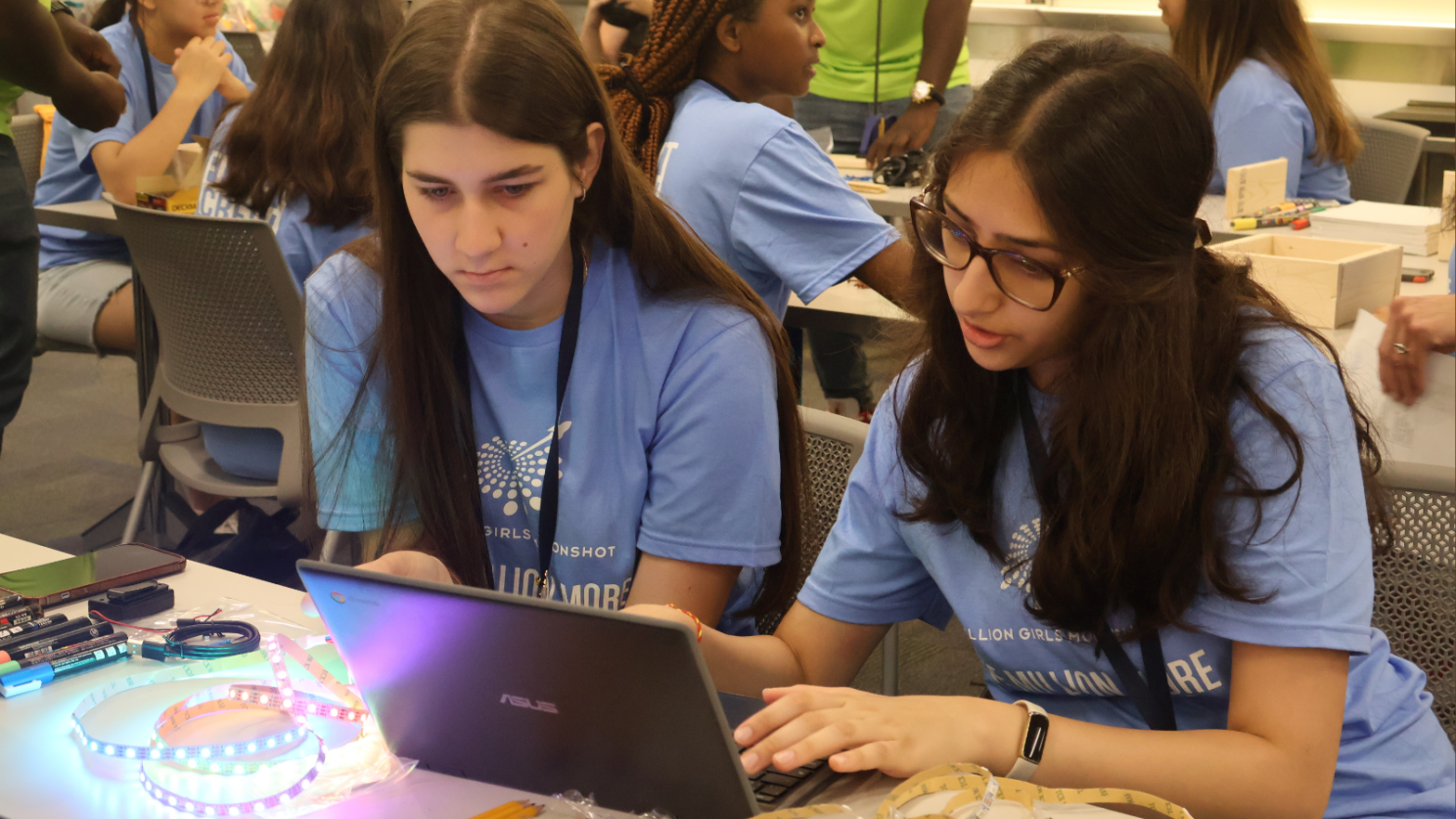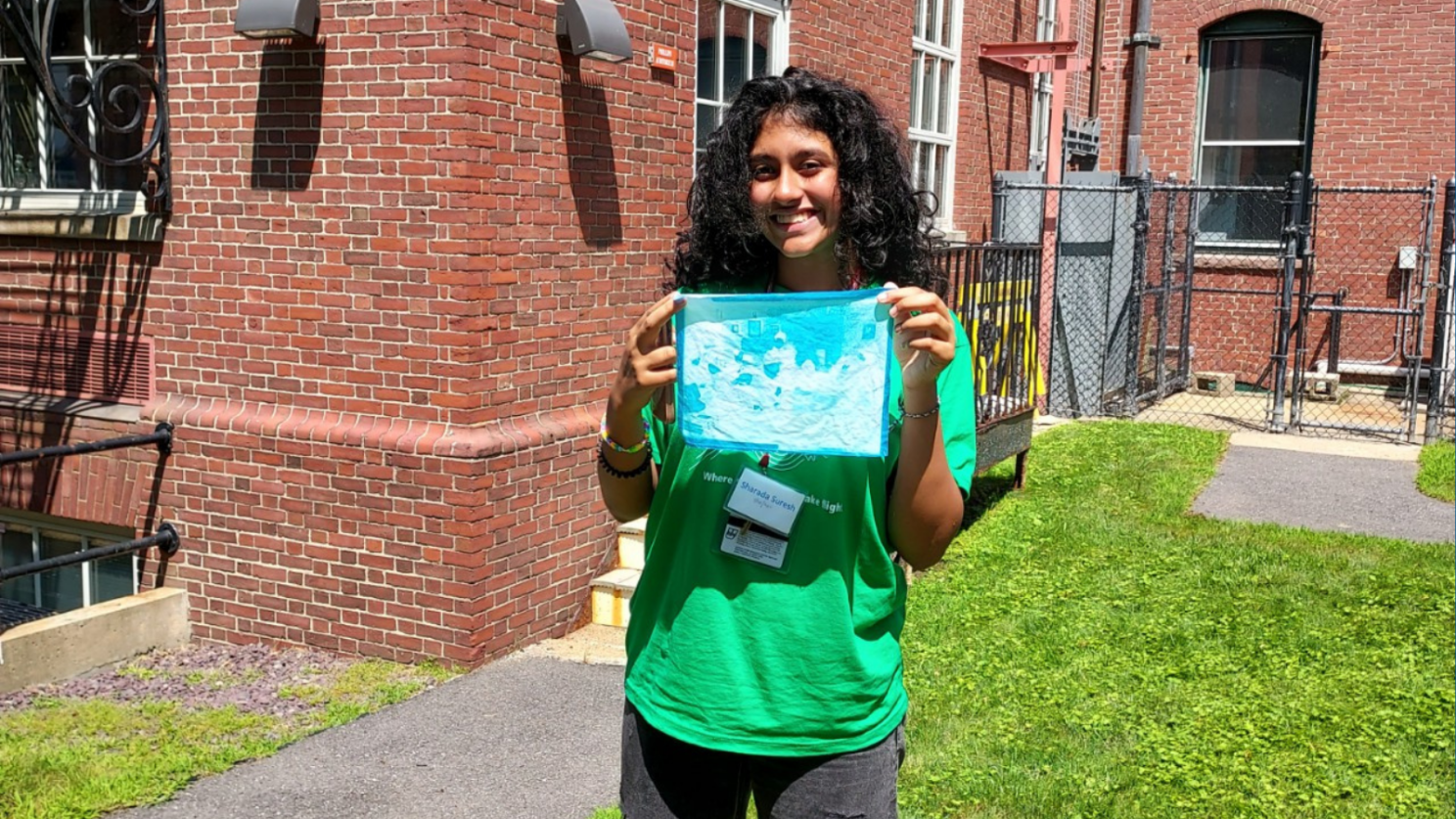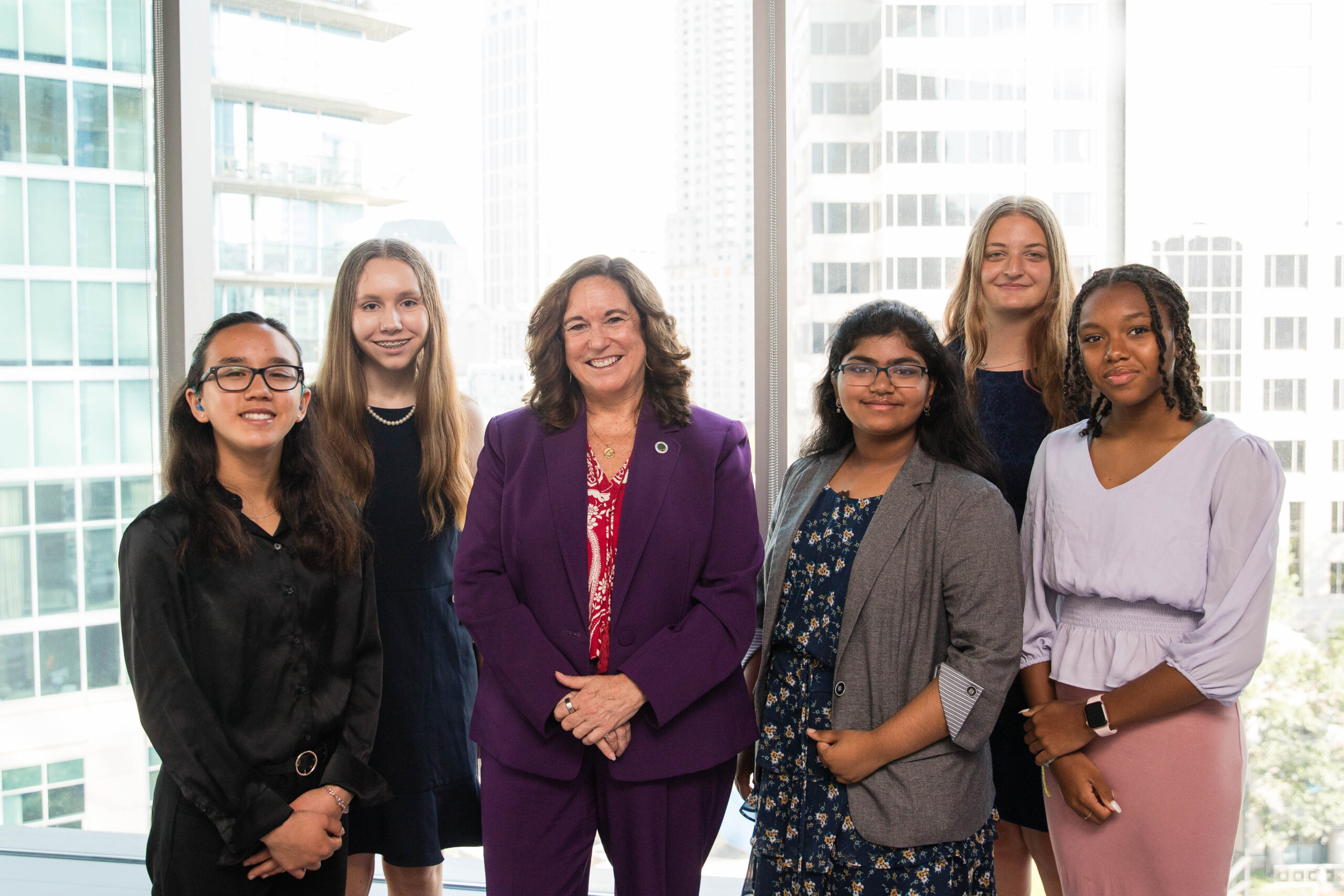Motivated by our ambitious focus to inspire 20 million more young people with STEM opportunities by 2027, we are sharing twenty reasons (in no particular order) why we love STEM learning outside the classroom.
1. Boost Content Mastery. Consistent participation in afterschool programs, especially those offering academic support, improves a young person’s educational achievement.
“Afterschool and summer STEM opportunities increase students’ comfort level with science, technology, engineering, and math and, therefore, their likelihood of success in related courses.”
– Isabella, 2023 Million Girls Moonshot Flight Crew
2. Building a New Future. Afterchool programs give students learning opportunities they can’t always find at school. Not all schools offer math and science courses required for college or future-focused classes like coding. Expanded learning with afterschool and summer opens doors to new futures that might have remained closed otherwise.
3. Career Interest. Tinkering, experimentation, and creativity are all common components of afterschool programming, especially STEM programs. These experiences often give students new ideas about what is possible for their future, including exposure to new careers. Indeed, research shows that participation in afterschool STEM programming can increase students’ career interest up to 80%.
4. Connecting to the Real World. Surveys show that students would be more motivated and more willing to engage with their communities if they understood how what they were learning applied to their lives. Afterschool gives educators the opportunity to bring students into the real world and apply their knowledge to solve real problems.
“Afterschool and summer STEM take learning to the next level, where youth are given the opportunity to apply their knowledge to real-world situations as well as grow and learn through experience.”
– Aika, 2023 Million Girls Moonshot Flight Crew
5. Equity. Participation in afterschool programs has been shown to help even out the disparities between high-, middle- and low-income students, especially for math achievement. This reality has a profound impact on communities for generations to come, allowing them to break cycles of poverty. The experiential learning OST STEM programs provide can also allow underrepresented populations to better see themselves in STEM careers.
6. Engaging Learners. Out-of-school programs have the independence and flexibility to curate vibrant learning experiences for students. This often includes hands-on activities or challenges that excite and inspire students to learn more. By offering programming that keeps students connected to topics of interest, afterschool programs keep students engaged.
7. Fail and Progress. Learning from failure gave us inventions that our everyday lives now depend on. Without iteration, we would not have lightbulbs, cars, modern medicines, or planes. Failure is central to science, technology, and invention. Out-of-school environments give young people a low-risk, supportive environment to fail, learn from mistakes, and try again. Afterschool teaches persistence.
8. Finding a Way Through Discovery. There is no pressure to pass the test in afterschool learning. This time gives students more flexibility to uncover concepts that interest them.
“Afterschool STEM programs act as eye-openers, revealing unexplored skills and aspirations in participants. They help individuals uncover talents they didn’t know they possessed and introduce them to dreams they hadn’t considered. By providing hands-on experiences, these initiatives create avenues for self-discovery, fostering a sense of awareness about abilities and ambitions that might have remained hidden otherwise.”
-Frida, 2023 Million Girls Moonshot Flight Crew
9. Fun for the Whole Family. Research shows that parents are among the biggest influences on youth interest and persistence in STEM. What better way to bond with and encourage students than to practice math with everyday excursions or explore nature together? There are endless possibilities to problem-solve as a family.
10. Inquiring Minds. Curiosity leads to higher performance in business and innovations that improve daily life. When students are inquisitive they are more engaged and this way of learning is most often found in out-of-school settings.
“Afterschool and summer STEM programs provide a unique environment where students can actively explore new disciplines outside of traditional learning methods. These programs pique curiosity, offer collaborative environments, and encourage students to learn by doing. They open the door for new areas of study and help inspire the next generation of scientists, mathematicians, and engineers.”
– Sharada, 2023 Million Girls Moonshot Flight Crew
11. Keeping Students in School and Afterschool Programs. Afterschool programs have been proven to reduce absenteeism and decrease dropout rates. By keeping students excited about learning, in safe environments, with peers, we give young people a brighter future.
12. Learning through Experience. Afterschool and summer give youth opportunities to get their hands dirty; and to learn through experience. Active learning helps students understand more complicated subjects better. By applying math or science concepts to real-world scenarios, students can comprehend the “how” and “why” behind their learning through the experience.
13. Role Models. “You can’t be what you can’t see.” This famous quote from Marian Wright Edelman rings true for so many young people. It is challenging to imagine possibilities when you have no idea what opportunities exist, especially in a world with rapidly changing technology. Afterschool and summer give students time to speak with STEM professionals who give real accounts of how they got to where they are. This not only gives them exposure to possible careers, but it also gives youth hope that there can be many ways to get to a desired place in work and life.
14. Sense of belonging. Afterschool provides welcoming environments for students to explore and find community. Through these relationships, youth begin to uncover more about their identity.
“It (afterschool programs) forms inclusivity by allowing people to feel like they belong somewhere in this STEM community.”
-Lily, 2023 Million Girls Moonshot Flight Crew
15. Sparking Joy. Believe it or not, joy is found to help students hold on to what they are learning better. Afterschool and summer provide environments filled with opportunities to play and connect with peers, thus increasing the ability to spark joy in a young person’s life.
16. Teamwork makes the Dream Work. Being able to communicate and collaborate with others is a highly sought after skill in the workplace and at home. Afterschool programs set youth up to work on projects in groups, honing their teamwork and communication skills. Introducing students to more opportunities for collaboration sets students up for future success.
17. Time. Eighty percent of a child’s time is spent outside of the classroom. Think about how many extra hours we have to learn about DNA from strawberry extractions, physics with rubber bands, solar power by building outdoor ovens, and coding with robots.
18. Well-Being. Out-of-School Time (OST) programs give students a safe space, with caring adults, to learn and practice important social-emotional skills. This leads to students’ general well-being, an increased ability to cope during difficult situations, and overall better mental health.
19. Workforce Development. STEM careers are growing rapidly and are projected to outpace and outpay non-STEM jobs. It is also predicted that 85% of 2030’s jobs don’t yet exist, due to changes in technology and the way we work. How do you prepare young people for a future yet to be determined? Foundational skills like critical thinking, teamwork, persistence, and problem-solving are key ways to get youth ready for the unknown. These skills, along with having the self-confidence to navigate uncertainty, are very commonly developed in afterschool STEM programs.
20. Youth Voice. Young people have a lot of ideas about how to solve current challenges and make their communities a better place. Afterschool and summer programs give students the space to develop their voice and the self-confidence to put their ideas into practice.
Our understanding of the importance of afterschool in the lives of young people, their families, and communities has come a long way in the last two decades. From federal recognition with the launch of initiatives like Engage Every Student and YOU Belong in STEM – to data on the role of afterschool in supporting families during the pandemic – OST has gained more recognition. Out-of-school time programs provide significant opportunities to transform the futures of youth nationwide.
Let’s inspire 20 million more young people with afterschool STEM opportunities by 2027.
____
Article originally published by Ron Ottinger on LinkedIn.







